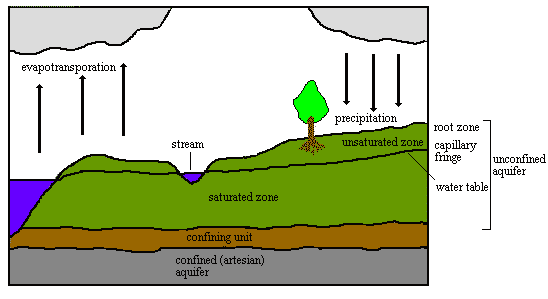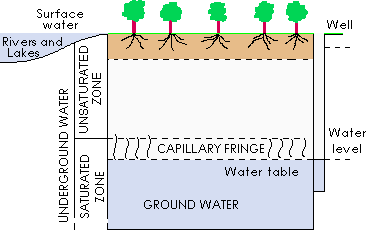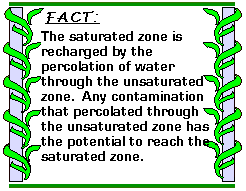



The hydrologic cycle shows that when rain falls to the ground, some water flows along the land surface to streams or lakes, some water evaporates into the atmosphere, some is taken up by plants, and some seeps into the ground. As water begins to seep into the ground, it enters a zone that contains both water and air, referred to as the unsaturated zone or vadose zone. The upper part of this zone, known as the root zone or soil zone, supports plant growth and is crisscrossed by living roots, holes left by decayed roots, and animal and worm burrows. Below lies an intermediate zone, followed by a saturated capillary fringe, which results from the attraction between water and rocks. As a result of this attraction, water clings as a film on the surface of rock particles.

Water moves through the unsaturated zone into the saturated zone, where all the interconnected openings between rock particles are filled with water. It is within this saturated zone that the term "ground water" is correctly applied. Ground water is held in aquifers, which are discussed in the following sections.
Fiction: Ground water is often thought of as an underground river or lake. Only in caves or within lava flows does ground water occur this way. Instead, ground water is usually held in porous soil or rock materials, much the same way water is held in a sponge.

| © Copyright |